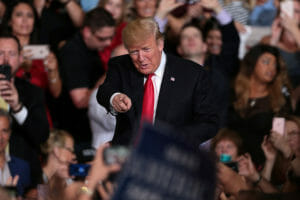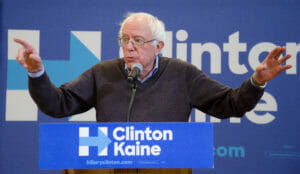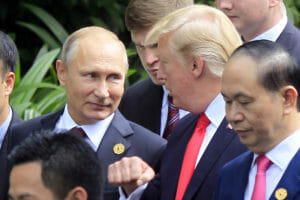Sotomayor’s Critics Are the Real Radicals
This week's hearings on Judge Sonia Sotomayor's nomination to the Supreme Court represent the opening skirmish in a struggle to challenge the escalating activism of an increasingly conservative judiciary.This week’s hearings on Judge Sonia Sotomayor’s nomination to the Supreme Court represent the opening skirmish in a struggle to challenge the escalating activism of an increasingly conservative judiciary.
The Senate’s Republican minority does not expect to derail Sotomayor, who would be the first Hispanic and only the third woman to serve on the court, and they realize that their attack lines against her have failed to ignite public attention, or even much interest.
Her restrained record as a lower court judge has made it impossible to cast her credibly as a liberal judicial activist. “They haven’t laid a glove on her,” said Charles E. Schumer, D-N.Y., her leading Senate supporter.
Yet none of this diminishes the importance of the Senate drama that opens on Monday because the argument over the political and philosophical direction of the judiciary that began 40 years ago has reached a critical moment. Under Chief Justice John Roberts, conservatives have finally established a majority on the court that is beginning to work its will.
Republican senators know that Sotomayor’s accession to the court will not change this, since she is replacing Justice David Souter, a member of the court’s liberal minority. But they want to use the hearings to paint the moderately liberal Sotomayor as, at best, the outer limit of what is acceptable on the bench in order to justify the new conservative activism that is about to become the rule.
“They have more or less given up on defeating her, so they are going to engage in a framing exercise,” Sen. Sheldon Whitehouse, D-R.I., a member of the Judiciary Committee, said in an interview. “They’re trying to define a Republican worldview imported into the judiciary as the judicial norm for the country.”
The goal, Whitehouse added, “is to define the political ideology” of the new conservative judiciary as “representing the mainstream, and to tarnish any judges who are outside that mark.”
If you wonder what judicial activism looks like, consider one of the court’s final moves in its spring term.
The justices had before them a simple case that could have been disposed of on narrow grounds, involving a group called Citizens United. The organization had asked to be exempt from the restrictions embodied in the 2002 McCain-Feingold campaign finance law for a movie critical of Hillary Clinton that it produced during last year’s presidential campaign. Citizens United says it should not have to disclose who paid for the film.
Rather than decide the case before it, the court engaged in a remarkable exercise of judicial overreach. It postponed its decision, called for new briefs and scheduled a hearing this September on the broader question of whether corporations should be allowed to spend money to elect or defeat particular candidates.
What the court was saying is that it wanted to revisit a 19-year-old precedent that barred such corporate interference in the electoral process. That 1990 ruling upheld what has been the law of the land since 1947, when the Taft-Hartley law banned independent expenditures by both corporations and labor unions.
To get a sense of just how extreme (and, yes, activist) such an approach would be, consider that laws restricting corporate activity in elections go all the way back to the Tillman Act of 1907, which prohibited corporations from giving directly to political campaigns.
It is truly frightening that a conservative Supreme Court is seriously considering overturning a century-old tradition at the very moment when the financial crisis has brought home the terrible effects of excessive corporate influence on politics.
In the deregulatory wave of the 1980s and ’90s, Congress was clearly too solicitous to the demands of finance. Why take a step now that would give corporations even more opportunity to buy influence? With the political winds shifting, do conservatives on the court see an opportunity to fight the trends against their side by altering the very rules of the electoral game?
Such an “appalling” ruling, Schumer said in an interview, “would have more political significance than any case since Bush v. Gore.” He added: “It would dramatically change America at a time when people are feeling that the special interests have too much influence and the middle class doesn’t have enough. It would exacerbate both of these conditions.”
So when conservatives try to paint Sotomayor as some sort of radical, consider that the real radicals are those who now hold a majority on the Supreme Court. In this battle, it is she, not her critics, who represents moderation and judicial restraint.
E.J. Dionne’s e-mail address is ejdionne(at)washpost.com.
© 2009, Washington Post Writers Group
Your support matters…Independent journalism is under threat and overshadowed by heavily funded mainstream media.
You can help level the playing field. Become a member.
Your tax-deductible contribution keeps us digging beneath the headlines to give you thought-provoking, investigative reporting and analysis that unearths what's really happening- without compromise.
Give today to support our courageous, independent journalists.




You need to be a supporter to comment.
There are currently no responses to this article.
Be the first to respond.